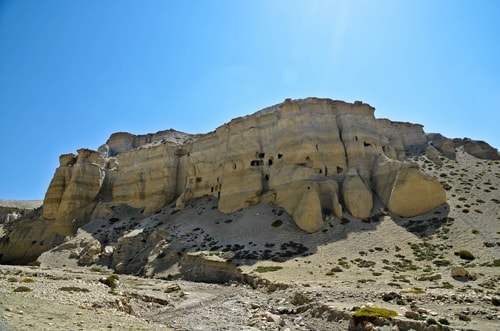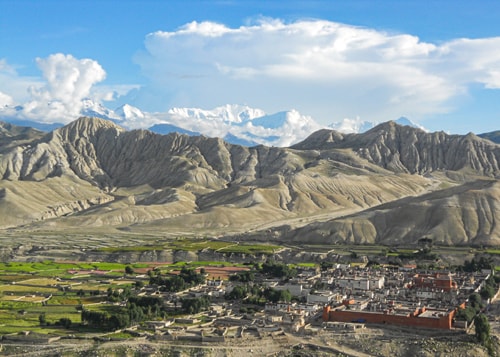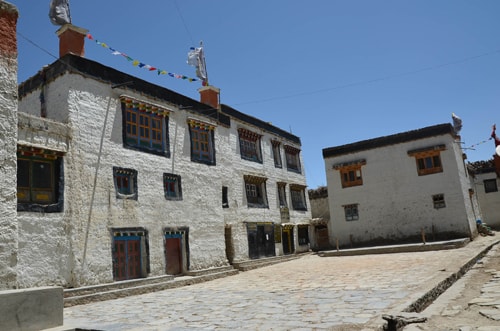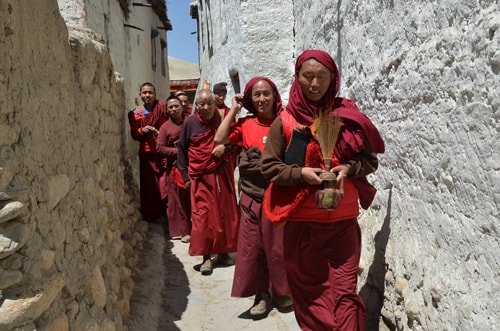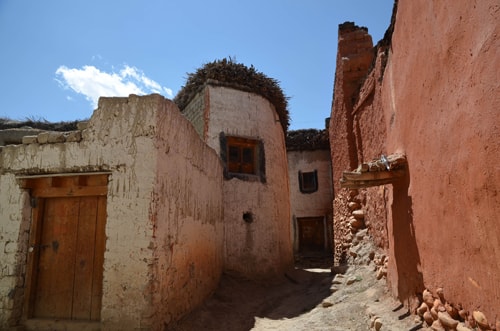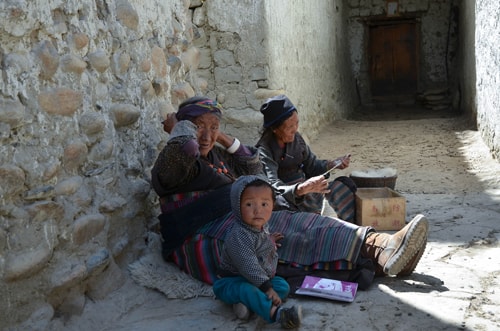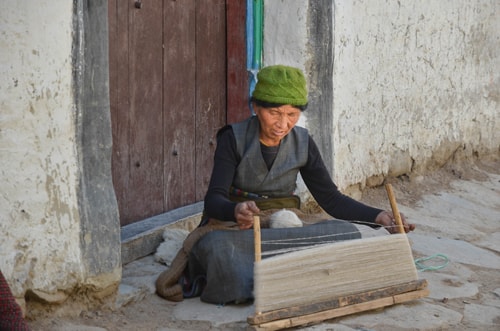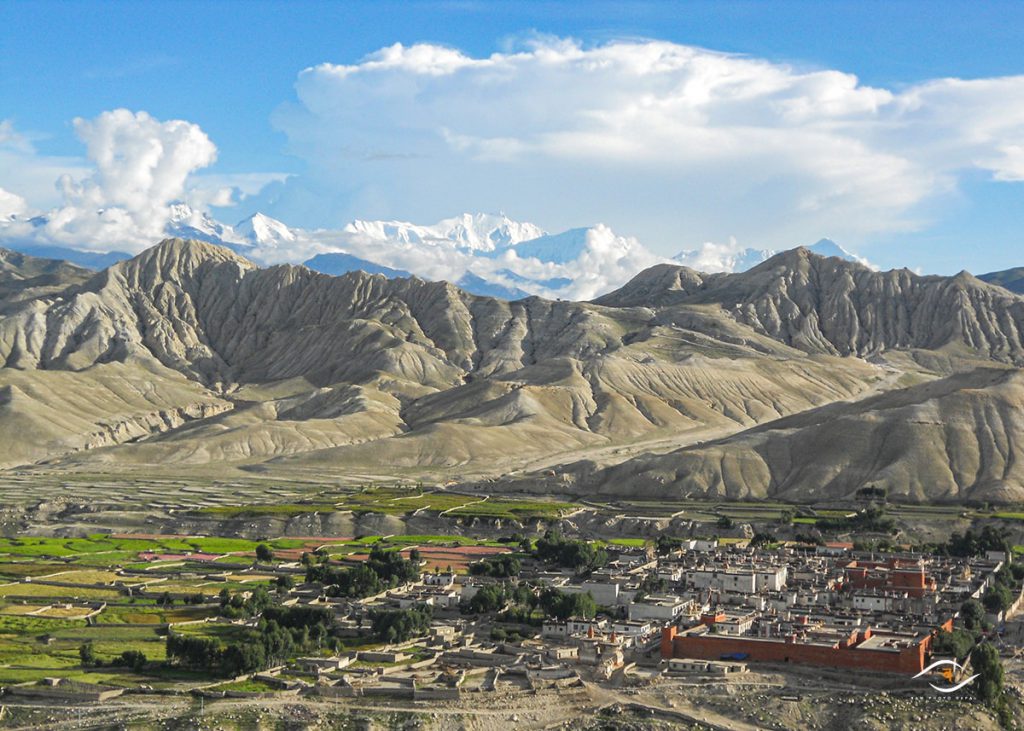Capital of The Forbidden Kingdom
Lomanthang is the capital city of the kingdom of Mustang –The Forbidden Kingdom, which runs east to west, also known as the walled city, which is located at an altitude of 3,720m and is L-shaped. Three quarters of the township lie inside the wall and the remaining outside. Monasteries occupy the northern quarter and the two quarters inside the wall consist of settlements.
The town sits in a broad valley filled with fields, horses, and yaks and contains about 150 houses, plus many cells for lamas. There are four major temples within the city and there is a caretaker and key, which are available at certain times. These really are very impressive, with huge clay statues of various Buddhas. The king’s palace is an imposing 4 storey building in the centre of the city.

Lomanthang Valley 
Lomanthang
Tiji Festival in the capital city, is said to be one of the last great traditional festivals in the Himalaya. The Tiji festival is a three-day ritual known as “The chasing of the Demons” that centres on the Tiji myth. The myth tells of a deity named Dorje Jono who must battle against his demon father to save the Kingdom of Mustang from destruction. The demon father wreaked havoc on Mustang by bringing a shortage of water (a highly precious resource in this very dry land) and causing many resulting disasters from famine to animal loss. Dorje Jono eventually beats the demon and banishes him from the land. Tiji is a celebration and reaffirmation of this myth and throughout the festival the various scenes of the myth will be enacted. It is of course timed to coincide with the end of the dry winter/spring season and will usher in the wetter monsoon season (the growing season for Mustang). Tiji comes from the word “ten che” meaning ‘the hope of Buddha Dharma prevailing in all worlds’ and is effectively a spring renewal festival.

Monks 
Houses
The city is an absolutely fascinating place, with narrow streets and houses built adjoining the city wall. The town has four of the largest and oldest Gompas in Nepal, dating back to the 14-15th centuries. These are spectacular structures featuring traditional Buddhist paintings, woodcarvings, and massive Buddha sculptures. Despite the apparent squalor of Lo Manthang, the city is prosperous and maintains a strong sense of community. Though the people call themselves Lobas, people from Lo, they are very much Tibetan and practice a sophisticated culture and economy. Before trade with Tibet was disrupted, all of the salt and wool trade on the Kali Gandaki passed through Lo Manthang, and this brought a sizable amount of money to the city. Wealth is now primarily measured in land, horses and social standing.

Peoples around Lomanthang 
Skilled People
There are two valleys above Lo Manthang. In the western valley is the site of the King’s summer palace at Tingkar, as well as the monastery of Namgyal, the monastery of victory, situated in a spectacular setting on top of a desolate ridge. The western valley contains Chosar, the site of the high school and two other monasteries. This is the main trading route to Tibet and described by Tucci as “used over the centuries by pilgrims and apostles, robbers and invaders”.
